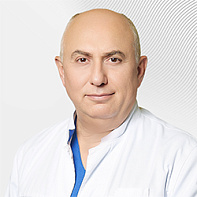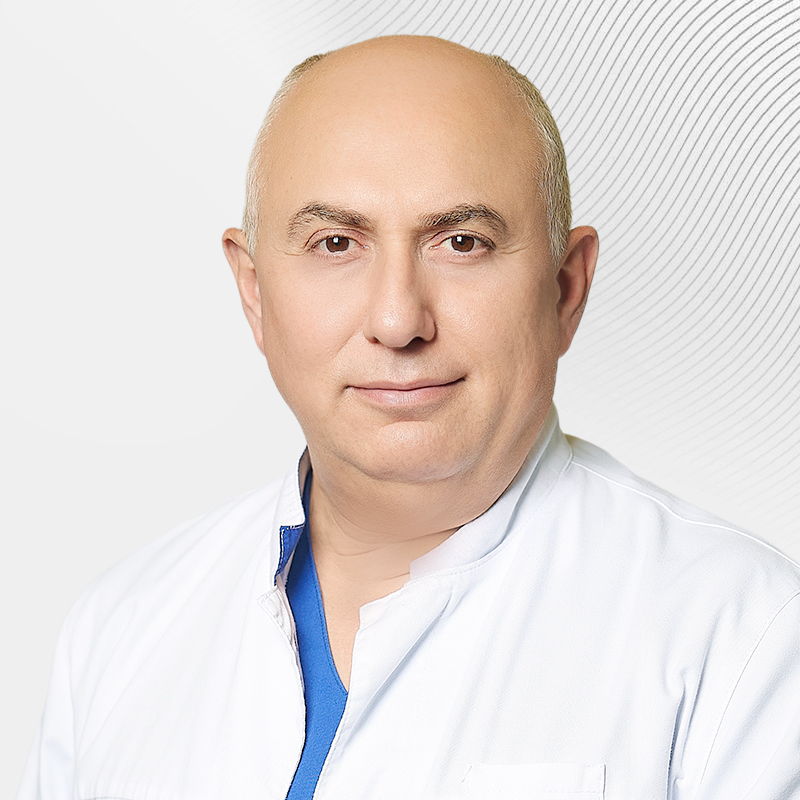Treatment of diabetic retinopathy
Diabetic retinopathy is one of the most severe late vascular complications of diabetes mellitus, leading in many cases to visual impairment, blindness and disability.
The problem of diabetes is currently becoming more and more significant. Up to 5% of the world's population suffers from diabetes, affecting people of all ages and nationalities. In Russia, the number of patients with diabetes exceeds 8 million people, increasing by 5-7% annually.
There is a significant variation in data on the prevalence of diabetic retinopathy, which is currently one of the leading causes of blindness and visual impairment. According to the Saint Vincent Declaration on epidemiological studies of diabetic retinopathy, diabetic retinopathy occurs in 90% of cases with type I diabetes, and in 38.9% of cases with type II diabetes.
Currently, the most common classification is E. Kohpega and M. Porta, according to which 3 stages of diabetic retinopathy are distinguished by clinical manifestations:
-
Stage I –nonproliferative - is characterized by the presence of pathological changes in the retina of the eye in the form of microaneurysms, hemorrhages (in the form of small dots or spots of rounded shape, dark color, localized in the central area of the fundus or along large veins in the deep layers of the retina), exudative foci (localized in the central part of the fundus, yellow or white with clear or blurry borders) and retinal edema. Retinal edema localized in the central (macular) region or along the course of large vessels is an important element of nonproliferative diabetic retinopathy.
Stage II– preproliferative, is characterized by the presence of venous anomalies (crispness, tortuosity, loops, doubling and/or pronounced fluctuations in the caliber of blood vessels), a large number of hard and "cotton-like" exudates, intraretinal microvascular anomalies, and many large retinal hemorrhages.
Stage III– proliferative, is characterized by neovascularization of the optic disc and/or other parts of the retina, vitreous hemorrhages, and the formation of fibrous tissue in the area of preretinal hemorrhages. Newly formed vessels are very thin and fragile — repeated hemorrhages often occur, contributing to retinal detachment. Newly formed vessels of the iris (rubiosis) often lead to the development of secondary (rubiose) glaucoma.
| The fundus picture is normal | Severe diabetic proliferative retinopathy |
The disease begins with increased vascular wall permeability and microocclusive processes in retinal vessels, contributing to the development of retinal ischemia and the appearance of fibrovascular changes in the fundus. The manifestation of diabetic retinopathy depends on the severity of pathological disorders in the vascular wall and microthrombosis processes.
The initial manifestations of diabetic retinopathy may remain unnoticed by the patient, even when the central region of the retina is affected and diabetic macular edema develops, therefore, regular monitoring of patients with diabetes mellitus by an ophthalmologist is necessary for timely diagnosis, treatment and prevention of the transition of the initial stages of retinopathy to more severe ones requiring complex surgical interventions.
The treatment of diabetic retinopathy is a joint work of an ophthalmologist and an endocrinologist, which consists in regular monitoring, timely diagnosis and carrying out the necessary amount of laser and surgical interventions for a particular patient. Only such a step-by-step, integrated approach will ensure the preservation of vision in such potentially severe patients with a sufficiently high probability of not only a decrease, but also a loss of visual functions.
Laser photocoagulation, which is the cauterization of altered areas of the fundus with a laser beam, is considered the most effective direct treatment for diabetic retinopathy. Laser photocoagulation is aimed at stopping the functioning of newly formed vessels, which pose the main threat to the development of disabling changes in the organ of vision — hemophthalmos, retinal detachment, damage to the iris — rubiosis, as well as the development of secondary glaucoma.
Laser photocoagulation performed in a timely and qualified manner in the late stages of diabetic retinopathy makes it possible to preserve vision in 60% of patients for 10-12 years. This indicator may be higher if treatment is started at an earlier stage.This method of treatment is not able to restore vision that has already been lost, but it can prevent further deterioration.
The EMC Ophthalmology Clinic has the most modern NIDEK YAG laser, which performs laser surgery quickly and safely.
In many cases, the cause of the appearance of complicated forms of diabetic retinopathy is retinal laser coagulation that was not performed in a timely manner. Such severe stages include the proliferative form of diabetic retinopathy, complicated by recurrent hemorrhages, cyst-like macular edema, retinal detachment, the development of newly formed vessels in the anterior part of the eye and the appearance of the so-called iris rubiosis and secondary neovascular glaucoma. Vitrectomy, an operation to remove the altered vitreous body and replace it with silicone oil or gaseous organofluorine compounds, gives such patients a chance to preserve their eyesight.
It should be noted that vitrectomy itself is one of the most difficult operations in ophthalmology, a kind of "aerobatics", and its performance in diabetic retinopathy is an art. Vitreoretinal surgeons at the EMC Ophthalmology Clinic have the necessary experience and qualifications to perform such complex operations. The clinic is also equipped with the most advanced combined faco-vitreo machine Constellation Vision System from Alcon, which allows performing this intervention at the highest level.
Prevention of diabetic retinopathy
- stable compensation of diabetes mellitus with constant control of carbohydrate, lipid and protein metabolism;
- normalization of blood pressure;
- dynamic observation by an ophthalmologist (once every 6 months).
To summarize, the treatment of diabetic retinopathy is the joint work of an ophthalmologist and an endocrinologist. The EMC Ophthalmology Clinic has the capabilities to diagnose and treat all, even the most severe, stages of diabetic retinopathy. Patients with diabetes mellitus are treated jointly by an endocrinologist and an ophthalmologist, which allows them to identify the initial diabetic changes in time and carry out the necessary treatment.
Get help
Specify your contacts and we will contact you to clarify the details.
Doctors

Elias Raid
Head of the EMC Ophthalmology Clinic, Ph.D. of Medical Sciences
-

Dmitriy Arzhukhanov
Ph.D. of Medical Sciences
-

Alfiya Bedredinova
Doctor of the highest category
-
.jpg)
Natalya Shilova
Ph.D. of Medical Sciences
-

Anna Semitko
-
.jpg)
Sergey Ignatiev
Ph.D. of Medical Sciences
-

Vitaliy Ivanov
-

Natalia Boscha
-

Oksana Levkina
Doctor of the highest category, Ph.D. of Medical Sciences
-

Viktor Makarov
Doctor of the highest category, Ph.D. of Medical Sciences
-

Elmira Sultanova
Doctor of the highest category, Ph.D. of Medical Sciences
-
Elias Raid
Head of the EMC Ophthalmology Clinic, Ph.D. of Medical Sciences
- Performs vision correction surgery
- He graduated from the MNTC "Eye Microsurgery" named after S.N.Fedorov. He has interned in various foreign clinics
- He worked in foreign clinics: Moorfields Eye Hospital,Heidelberg University Hospital,Centre Hospitalier Universitaire de Bordeaux
Total experience
34 years
Experience in EMC
since 1996




